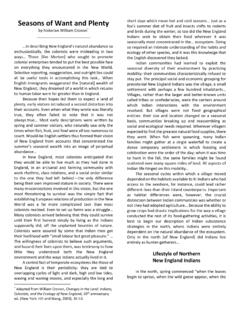Transcription of HIGH COURT OF AUSTRALIA - Cala Records
1 high COURT OF AUSTRALIA plenty v. DILLON (1991) 171 CLR 635 91/004 Page 1 of 12 Trespass COURT high COURT of AUSTRALIA Mason (1), Brennan (1), Toohey (1), Gaudron (2) and McHugh 2) Adelaide, 1990, August 20, 21; 1991, March 7. #DATE 7:3:1991 JUDGE 1 - MASON , BRENNAN AND TOOHEY JJ. Mr plenty is the owner and occupier of a small farm at Napperby near Port Pirie, South AUSTRALIA . He and Mrs plenty are the parents of a girl who, at the time of the events giving rise to the present litigation, was aged 14 years. An allegation was made in July 1978 that the child had committed an offence and, pursuant to and 15 of the Juvenile Courts Act 1971-1975 ( ), a complaint was laid against the child alleging that she was in need of care and control. That is the procedure which the Juvenile Courts Act prescribes for dealing with a child against whom an allegation of an offence is made.
2 When such a complaint is laid a justice is authorized to issue a summons to the child to appear before a Juvenile COURT : A justice issued a summons to the child to appear. The service of that summons was governed by of the Justices Act 1921-1975 ( ). Section 27 (as it then stood) provided: " Subject to the provisions of this or any other enactment specially applicable to the particular case, any summons or notice required or authorized by this Act to be served upon any person may be served upon such person by (a) delivering the same to him personally; or (b) leaving the same for him at his last or most usual place of abode or of business with some other person, apparently an inmate thereof or employed thereat, and apparently not less than sixteen years of age: Provided that any COURT or justice before whom the matter comes may refuse to act upon any non-personal service as aforesaid, and may require the summons or notice to be re-served, if it or he is of opinion that there is a reasonable probability - I.
3 That the summons or notice has not come to the knowledge of the person so served; and II. that such person would have complied with or acted upon such summons or notice if it had come to his knowledge." 2. On 6 and 31 October 1978 the police attempted to serve the summons on the child. On the latter occasion the police effected non-personal service of the summons by leaving it with her father. The child did not appear. Instead of ordering reservice of the summons, the magistrate ordered that a fresh summons be issued. In addition, notices were issued to Mr and Mrs plenty , pursuant to of the Juvenile Courts Act, ordering them to attend at the hearing of the complaint against their child. 3. Constable Dillon, accompanied by Constable Will, went to Mr plenty 's farm in order to serve the fresh summons either personally on the child or, by non-personal service, on the father.
4 Their entry onto the farm for this purpose was the occasion of an alleged trespass for which Mr plenty brought the present action. He joined as defendants Constables Dillon and Will, their senior officer and the State of South AUSTRALIA . It is unnecessary to trace the full history of the matter except to say that, in the view taken of the facts by a majority of the Full COURT of the Supreme COURT of South AUSTRALIA , Mr plenty had expressly revoked any implied consent given to any plenty v. DILLON (1991) 171 CLR 635 91/004 (.. continued) Page 2 of 12police constable to enter upon his farm in order to serve the summons or any other document relating to the matter concerning his child. The appeal to the Full COURT proceeded on that footing and the defendants were content to argue the present appeal on the same footing.
5 Thus the issue for determination is simply whether a police officer who is charged with the duty of serving a summons is authorized, without the consent of the person in possession or entitled to possession of land and without any implied leave or licence, to go upon the land in order to serve the summons. 4. The starting point is the judgment of Lord Camden in Entick v. Carrington (1765) 19 St Tr 1029, at p 1066: "By the laws of England, every invasion of private property, be it ever so minute, is a trespass. No man can set his foot upon my ground without my licence, but he is liable to an action, though the damage be nothing .. If he admits the fact, he is bound to shew by way of justification, that some positive law has empowered or excused him." And see Great Central Railway Co. v . Bates (1921) 3 KB 578, at p 582; Morris v.
6 Beardmore (1981) AC 446, at p 464. The principle applies to entry by persons purporting to act with the authority of the Crown as well as to entry by other persons. As Lord Denning said in Southam v. Smout (1964) 1 QB 308, at p 320, adopting a quotation from the Earl of Chatham: "The poorest man may in his cottage bid defiance to all the forces of the Crown. It may be frail - its roof may shake - the wind may blow through it - the storm may enter - the rain may enter - but the King of England cannot enter - all his force dares not cross the threshold of the ruined tenement.' So be it - unless he has justification by law." And in Halliday v. Nevill (1984) 155 CLR 1, Brennan J. said (at p 10): "The principle applies alike to officers of government and to private persons. A police officer who enters or remains on private property without the leave and licence of the person in possession or entitled to possession commits a trespass and acts outside the course of his duty unless his entering or remaining on the premises is authorized or excused by law.
7 " 5. The proposition that any person who "set(s) his foot upon my ground without my licence .. is liable to an action" in trespass is qualified by exceptions both at common law and by statute. The first ground relied on to authorize or excuse the entry of Constables Dillon and Will on Mr plenty 's farm on the occasion of the attempted service of the fresh summons was the common law rule known as the third rule in Semayne's Case (1604) 5 Co Rep 91a, at p 91b (77 ER 194, at p 195) which reads: " In all cases when the King is party, the sheriff (if the doors be not open) may break the party's house, either to arrest him, or to do other execution of the (King)'s process, if otherwise he cannot enter. But before he breaks it, he ought to signify the cause of his coming, and to make request to open doors". 6. The scope of the third rule in Semayne's Case is stated in Tomlins' Law-Dictionary, 4th ed.
8 (1835), , tit. Execution, III. 3: "It is laid down as a general rule in our books, that the sheriff, in executing any judicial writ, cannot break open the door of a dwelling-house; this privilege, which the law allows to a man's habitation, arises from the great regard the law has to every man's safety and quiet, and therefore protects them from the inconveniences which must necessarily attend an unlimited power in the sheriff and his officers in this respect; hence, every man's house is called his castle. 5 Co 91: 3 Inst 162: Moor, 668: Yelv. 28: Cro Eliz 908: Dalt Shar 350. Yet in favour of executions, which are the life of the law, and especially in cases of great necessity, or where the safety of the king and commonwealth are concerned, this general case has the following exceptions: 1st. That whenever the process is at the suit of the king, the sheriff or his officer may, after request to have the door opened, and refusal, break and enter the house to do execution, either on the party's goods, or take his body, as the case shall be.
9 5 Co 91 b." The third rule in Semayne's Case provides justification for more than a mere entry onto land; in terms it relates to breaking into a dwelling-house. The justification afforded by the rule is needed only when the plenty v. DILLON (1991) 171 CLR 635 91/004 (.. continued) Page 3 of 12alleged trespass is of that kind: see, for example, Penton v . Brown (1664) 1 Keb 698 (83 ER 193); Southam v. Smout, at p 321 et seq. Of course, justification for breaking into a dwelling is justification for entering on the land on which the dwelling stands. However, the third rule in Semayne's Case affords justification for an entry, whether by breaking into a dwelling-house or not, only when the purpose of the person making the entry is either "to arrest.
10 Or to do other execution of the (King)'s process". It is not suggested that the defendant police officers proposed to arrest Mr plenty 's daughter. They had no authority to do so. The magistrate had power to issue a warrant for her arrest (Juvenile Courts Act, (2)), but he did not do so. So the question is whether the police officers were engaged in "execution of the (King)'s process". 7. The cases draw a distinction between execution of the King's process and the execution of process sued out for a litigant's private benefit. The distinction is based on the difference between the public interest which is served by execution of the King's process and the private interest which is served by execution of other process: Burdett v. Abbot (1811) 14 East 1, at p 162 (104 ER 501, at p 563); Harvey v. Harvey (1884) 26 ChD 644. It is by no means clear that proceedings under and 15 of the Juvenile Courts Act are proceedings "when the King is party" (cf.)









